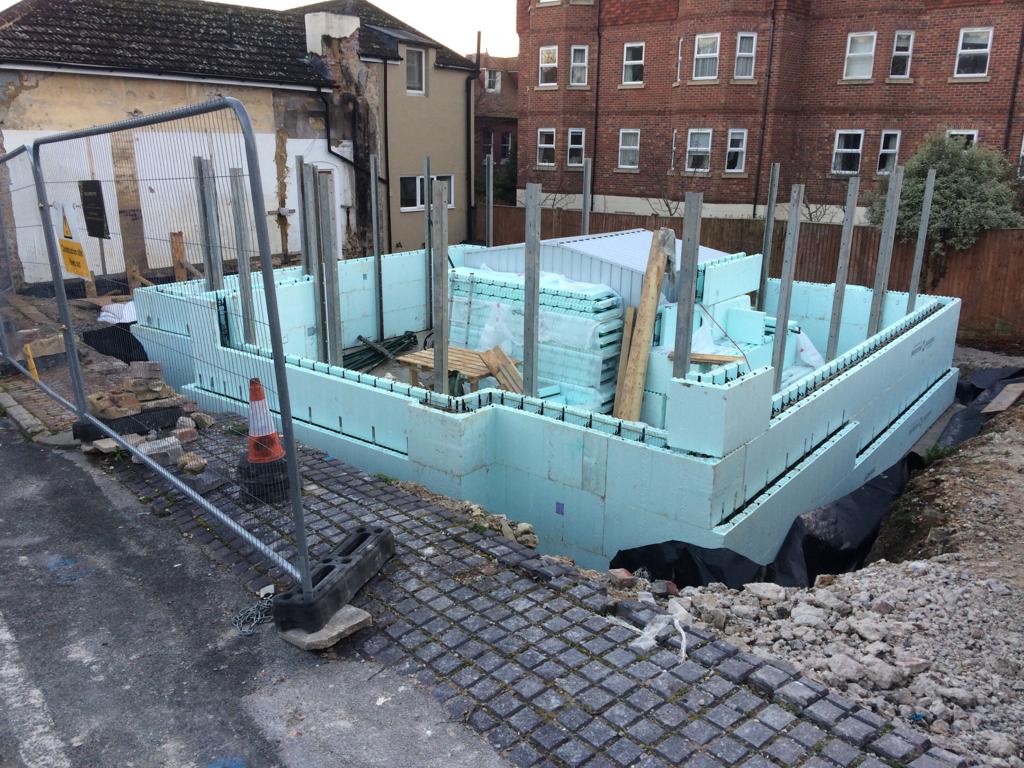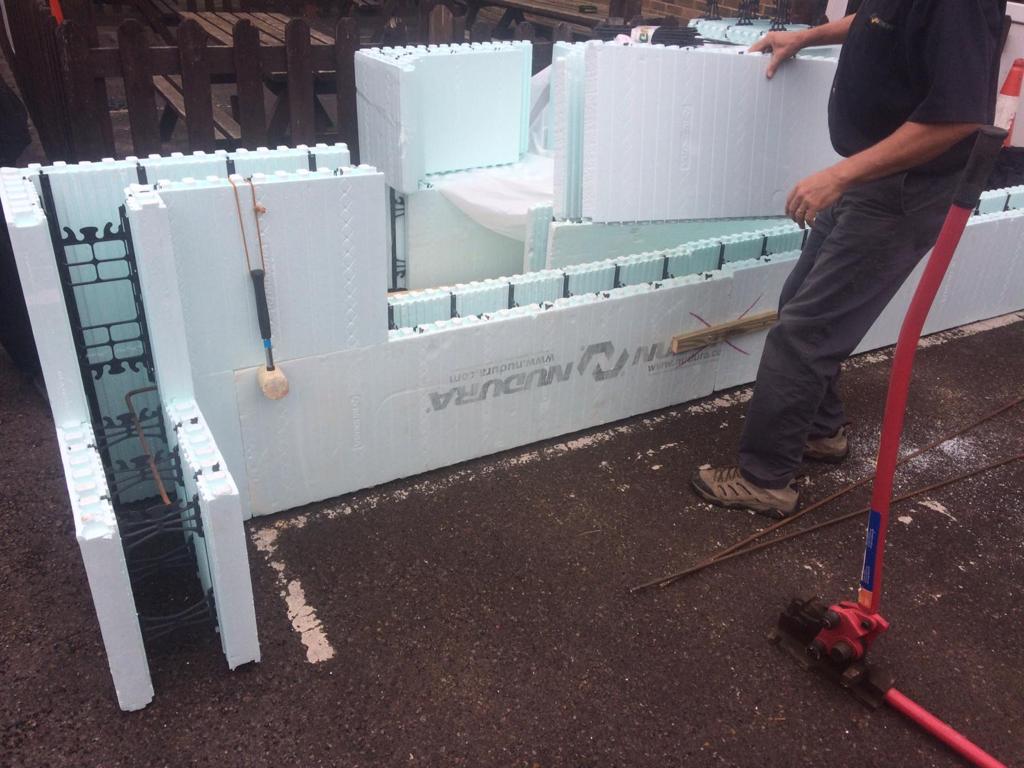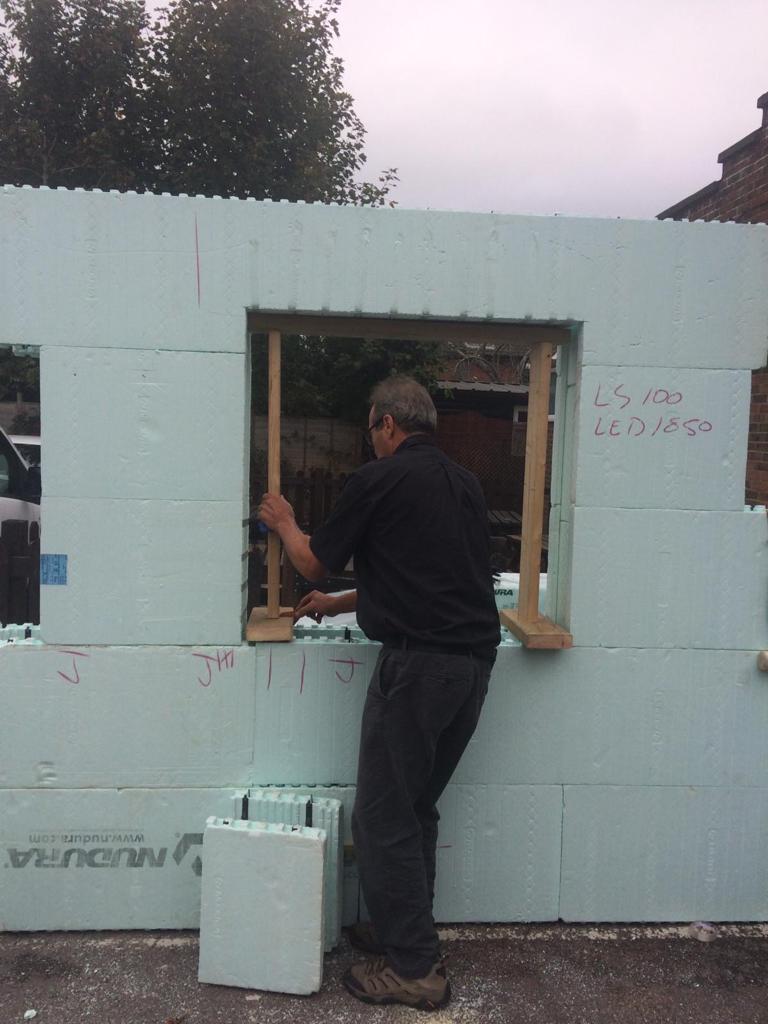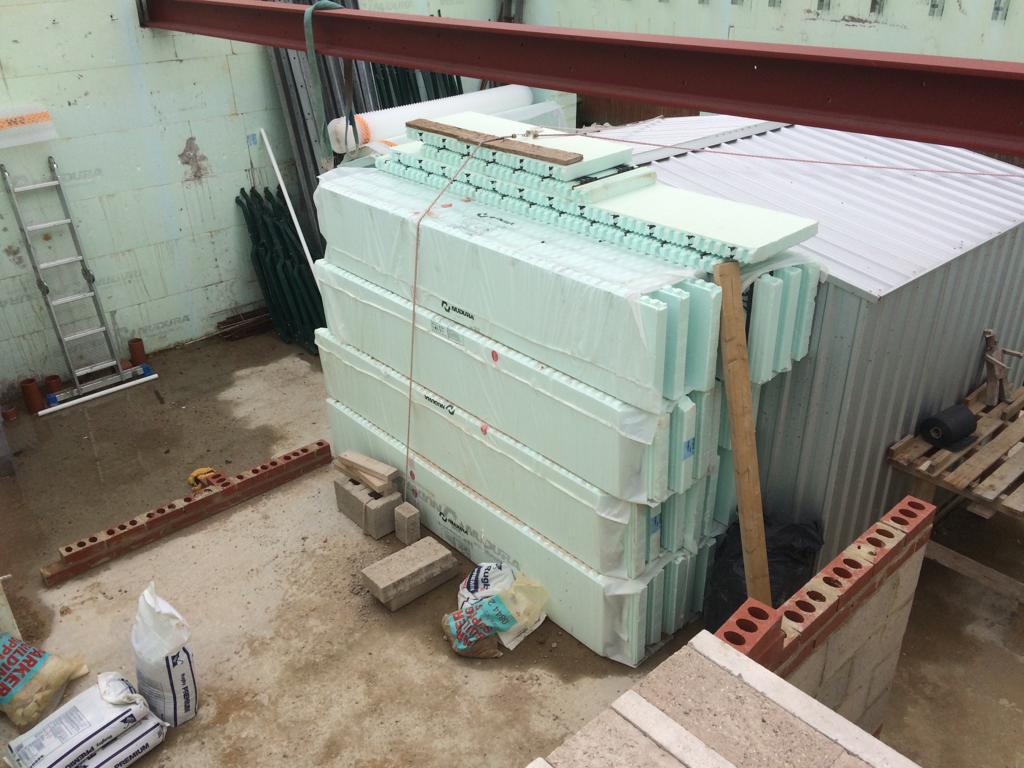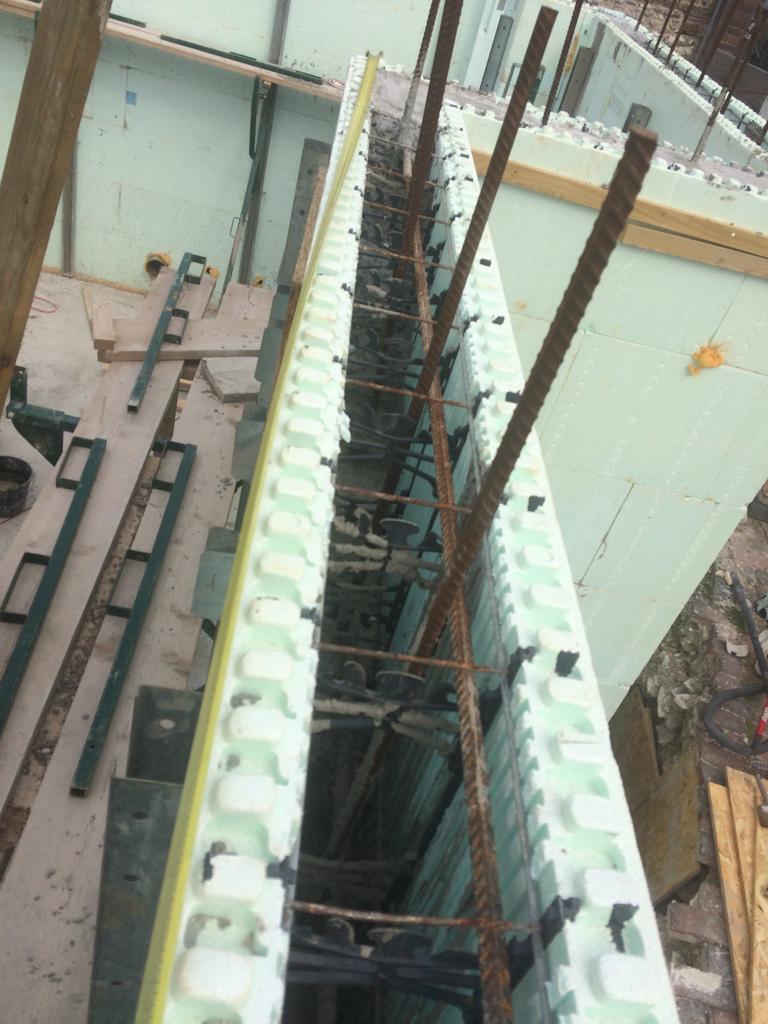ICF Construction in the UK
Introduction
Insulated Concrete Forms (ICF) has emerged as a popular option, revolutionising the way we build. In this blog, we delve into the personal experience of Robin from our office, who successfully used ICF in his self-build project . We’ll uncover the benefits of ICF, Robin’s choice of Nudura, the factors contributing to its limited use in the UK, essential considerations, and its potential for subterranean development.
What are ICF’s Advantages as a Building Material?
Robin’s decision to adopt ICF was driven by his recognition of its insulative capabilities. Furthermore, given the building’s subterranean design and the necessity for concrete within the retaining elements of the build, ICF addressed several needs at once. This choice was also financially driven, as Robin was able to assemble much of the wall structure himself, thereby reducing the expenses associated with bricklaying and labour. This approach resulted in a significant cost reduction compared to traditional masonry construction; estimations of around a 60% saving for this element. Robin also bypassed the need for further materials and additional formwork in the concrete retaining elements of the build. Consequently, the construction schedule was streamlined, and the accompanying costs were carefully managed; a key consideration in a selfbuild project.
ICF: A brief history
ICF construction originated in North America. Its inception can be traced back to the mid-20th century when builders and architects began experimenting with using insulated forms made of materials like foam or polystyrene to create walls. The primary intention was to improve the insulative properties of retaining walls for basements. As such, the early stages of ICF development were closely linked to subterranean construction and the desire to create durable, well-insulated foundations for buildings, particularly in regions with extreme weather conditions. The concept of using these forms to shape concrete and provide insulation gradually evolved, leading to the creation of the modern ICF systems we see today.
North American timber frame construction also played a role in shaping ICF’s evolution. Builders sought ways to combine the above ground development of timber frame construction with the below ground subterranean development of ICF; the two systems integrate well.
Over time, ICF construction methods expanded beyond their initial use in foundations and basements to encompass entire above-ground structures. The recognition of ICF’s benefits, including enhanced energy efficiency, soundproofing, and resilience, led to its growing popularity in various architectural applications.
ICF construction provides improved energy efficiency. ICF construction has two layers of insulation, internal and external with a solid mass of concrete in the centre. This is effective at regulating internal temperatures within the building. ICF minimises heat loss during colder spells and prevents overheating in warmer weather. This translates into tangible and lasting benefits.
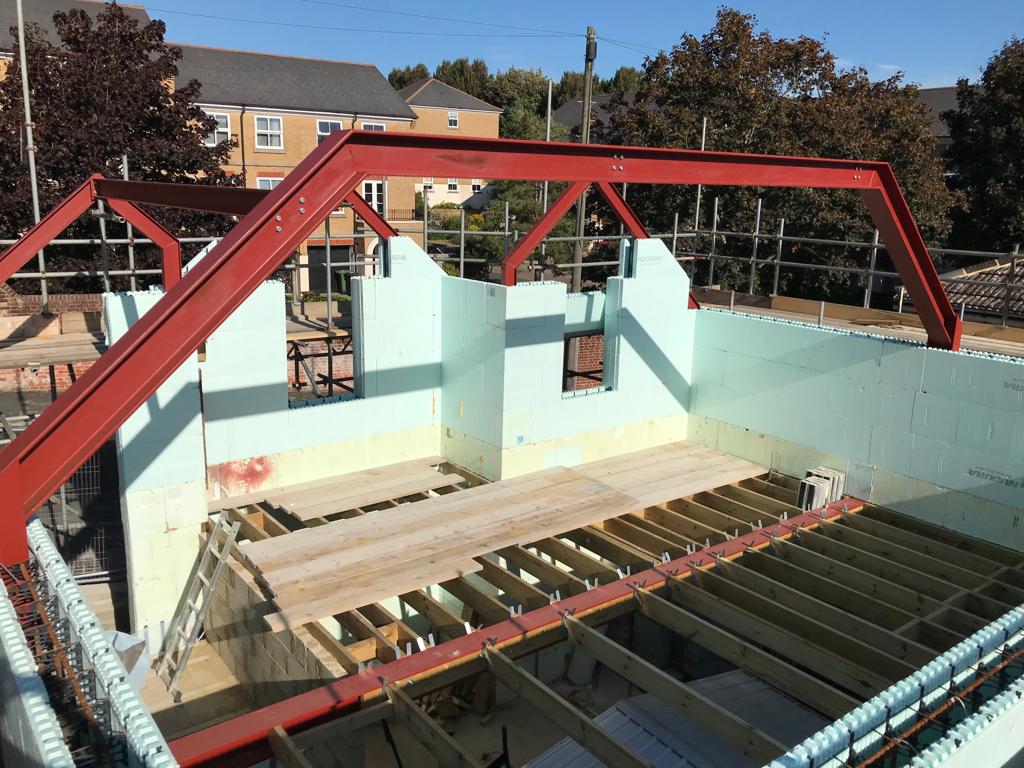
What ICF Product Should I Use?
Among the array of ICF options available, Robin opted for Nudura. However, the market offers a variety of ICF brands, each with unique features and benefits. This underscores the importance of thorough research to select the most suitable ICF system based on project requirements, budget, and personal preferences. Nudura is one of the biggest names in the realm of ICF construction. Founded in the late 1990s, Nudura has become a leading manufacturer of ICF systems, and its products are utilised in various residential, commercial, and industrial construction projects.
Robin participated in a training session provided by Nudura, during which he acquired knowledge about assembling forms, preparing for concrete pouring, and arranging rebar. This hands-on experience proved invaluable for diving into ICF work. However, it’s crucial to emphasise the significance of undertaking the ICF process under the guidance of seasoned experts. There’s simply no substitute for well-honed expertise in this field; and there were plenty of people along the way keen to help and offer assistance.
Why The Slow Adoption of ICF In The UK?
While ICF has garnered significant attention in the construction industry, its adoption in the UK remains comparatively limited. This can be attributed to factors such as unfamiliarity among builders and architects, as well as potential misconceptions regarding the complexity of working with ICF. As the benefits of ICF become more widely recognised, its use is gradually gaining momentum.
What Are The Key Considerations When Using ICF?
Embarking on an ICF project requires careful consideration. One critical aspect is ensuring precise setting out. It cannot be stressed how important it is to Seek professional advice to execute this crucial step accurately. The involvement of competent personnel is essential to ensure an error-free process. The kind of concrete pump employed holds significant importance. Given that this technology isn’t as commonly employed in the UK, it becomes vital for both the concrete supplier and the pump operators to possess a good grasp of the procedure. Their familiarity with the process is pivotal for its successful execution.
Conclusion
Robin’s journey with ICF in his self-build project showcases the transformative potential of this construction material. Here at Shape Architecture Ltd. We have a inhouse experience and expertise with this construction methodology and are happy to discuss this with you if this is something you would like to explore with your construction project. Please feel free to contact us at Shape Architecture at 01273 648 342 or brighton@shapearchitecture.co.uk
Link to Self-Build Project: https://www.shapearchitecture.co.uk/project/new-house-in-eastbourne/
Link to Self-Build Blog: https://www.shapearchitecture.co.uk/self-build-architects/
